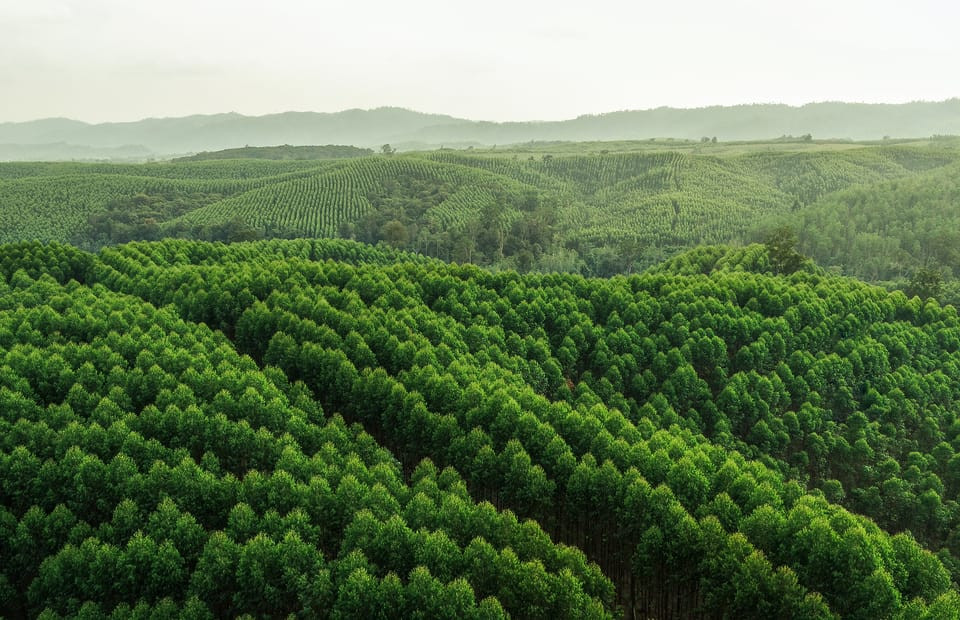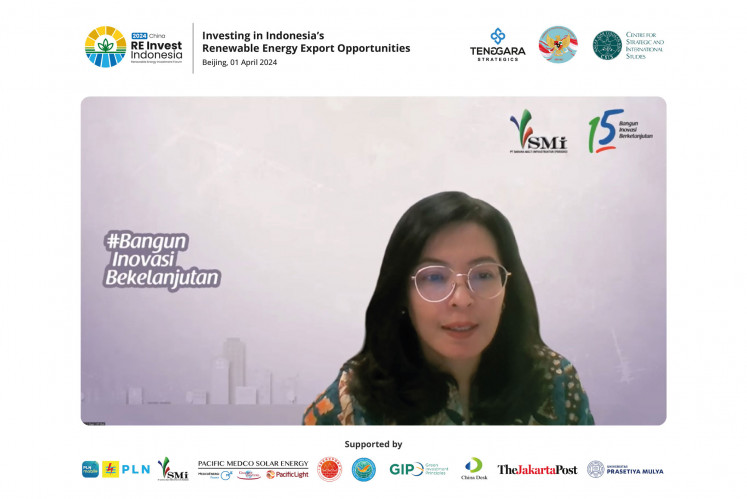Balancing sustainable development and conservation in the forestry sector in Indonesia
Despite the economic and social impact of the COVID-19 pandemic, Indonesia’s forestry industry performed well in 2020 in terms of exports and employment.
Change Size

D
espite the economic and social impact of the COVID-19 pandemic, Indonesia’s forestry industry performed well in 2020 in terms of exports and employment. These positive trends went hand in hand with a continued focus on peatland conservation, which also produced solid results through close collaboration between the public and private companies.
The latest data from Indonesia’s Environment and Forestry Ministry shows that exports from the upstream and downstream sectors of the forestry industry reached US$11.08 billion in 2020, far exceeding the revised target of $7 billion. The export performance was considered impressive by industry experts, given the global economic recession brought about by the pandemic.
The production of forest plantations (hutan tanaman industri - HTI) also showed a positive trend. Data from the Association of Indonesian Forest Concession Holders (APHI) show that production increased by 14% to 45.5 million cubic meters in 2020. At the same time, the planting of trees under the HTI scheme also increased by 42% to 274,000 hectares, which is higher than in the preceding year.
APHI data also highlighted the number of people employed in the industry. To date, a total of 1.5 million people work in the upstream and downstream sectors of the forestry industry.
Due to these positive business trends, companies in the forestry business had been able to avoid excessive lay-offs, said Siti Nurbaya, the Minister for the Environment and Forestry.
But the ministry also remains focused on the responsible and sustainable management of Indonesia’s peatlands, including peat forest located in production forest and conservation areas in provinces such as Riau, Sumatra.
Riau is rich in peat forests and home to extensive pulpwood supply chains. Currently, peat forests in the province cover hundreds of thousands of hectares.
The peat forests serve as a source of carbon sequestration and play a role in addressing the global climate crisis, according to a report in FORESTHINTS.NEWS, which reports on forestry, environmental and climate change issues.
Environment and Forestry Ministry data from 2019 show that, of the remaining 1.53 million hectares of natural forests – both primary and secondary – across Riau, close to 950,000 hectares, or nearly 62%, are peat forests. In terms of legal status, over 96% of all Riau’s remaining natural forests are situated in state forest areas under the authority of the ministry.
To see the remaining peat forests are spread across five major peat hydrological landscapes (KHGs) in mainland Riau, covering an area of more than 2.76 million hectares. The ministry’s spatial team used USGS Landsat 8 and ESA Sentinel 2 satellite images, with data up to mid-January 2021.
The results of these spatial checks indicate that about 860,000 hectares of natural forests – almost all of which are peat forests – remained in the five KHGs as of last month, an area nearly 12 times the size of Singapore.
“The remaining peat forests in the five KHGs as of mid-January 2021 are unquestionably still substantial, given that they make up 90% of 2019’s total peat forests remaining in Riau province – about 860,000 hectares out of 950,000 hectares,” the report says.
About 73% of this total area of 860,000 hectares is made up of production forests, major parts of which are located in ecosystem restoration, logging and pulpwood concessions.
The report says that nearly all of these natural forests, virtually all of which are on peatland – both inside and outside the peat dome areas in the five KHGs – are legally protected, as parts of these areas are conservation areas, ecosystem restoration concessions as well as areas set aside for protection purposes by pulpwood and logging concessions.
“As such, the substantial amount of peat forests remaining in Riau province, particularly those in the five KHGs, are legally secured to continue playing an important role, most notably in carbon sequestration,” says the ministry’s report.
APRIL Group, a leading producer of fiber and paper products with operations in Riau, is an example of a company that has devoted considerable resources to the sustainable management of peatlands.
APRIL’s commitment to the implementation of best practices in peatland management, in line with the government’s conservation and development goals, is formally laid down in the company’s Sustainable Forest Management Policy (SMFP) 2.0. The company and its supply partners operate on 245,145 hectares of managed peatland, while at the same time conserving 144,060 hectares of peatland.
Supporting Government Targets
Since 2015, APRIL has pledged to conserve one hectare of forest for every hectare of plantation under its management So far, the company has achieved 82% of this 1-for-1 commitment.
“Over the next few years, we will focus on achieving that 1-for-1 commitment. As of now, we conserve about 365,000 hectares compared to about 448,000 hectares of plantations,” said Sihol Aritonang, president director of PT Riau Andalan Pulp and Paper (RAPP), the operating arm of APRIL Group.
The pulp and paper producer also recently set out its long-term sustainability vision through its APRIL2030 strategy, a set of commitments and concrete measures launched at the end of 2020. APRIL2030 is also aligned with the UN Sustainable Development Goals (SDGs) and contributes to the achievement of the Goals in Indonesia over the next decade.
The APRIL2030 vision is comprised of four commitments with 18 ambitious targets: Climate Positive, Thriving Landscapes, Inclusive Progress and Sustainable Growth.
Under Thriving Landscapes, APRIL seeks to ramp up investments in wildlife and environment conservation. Their investment in landscape conservation will earn another $1 for every ton of plantation fiber harvested per year. APRIL also aims for zero net loss of conservation and restoration areas.
In addition, the paper giant is investing in silviculture research and technology innovation to increase the plantation fiber productivity by 50%. To advance tropical peatland science, APRIL also recently set up a tropical peatland science hub at the RER Eco-Research Camp on Riau’s Kampar Peninsula.
APRIL’s production-protection model is capable of supporting conversation investment. “Our plan revolves around self-funding from production activities to support [environmental] protection,” Sihol said.
The company is also open to future collaboration with local and international partners to safeguard the environment, in line with the government’s conservation goals.









